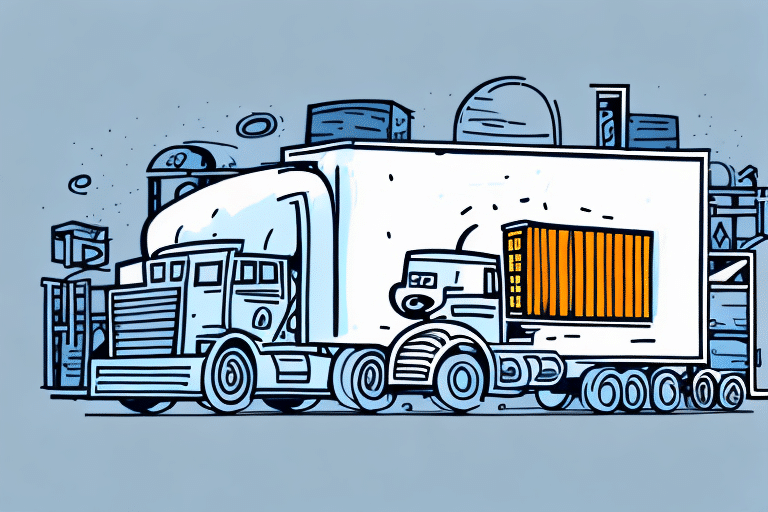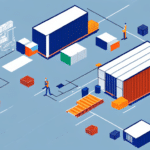Transitioning from Owning a Warehouse to Utilizing a 3PL: A Comprehensive Guide
Shifting from owning your own warehouse to partnering with a third-party logistics provider (3PL) is a pivotal decision for any business. This transition can significantly influence your operations, customer satisfaction, and financial health. It’s crucial to understand the distinctions between owning a warehouse and employing a 3PL, recognize the advantages of a 3PL, and evaluate the key considerations before making the switch.
Understanding the Differences Between Owning a Warehouse and Using a 3PL
Owning a warehouse offers certain benefits but also presents several challenges. These challenges include high maintenance costs, inventory management complexities, distribution handling, and shipment coordination. Conversely, leveraging a 3PL can mitigate these issues, allowing businesses to concentrate on their core activities, achieve cost savings, and enhance supply chain efficiency.
Another significant advantage of using a 3PL is the flexibility it offers. Businesses can scale operations up or down based on demand without the financial and logistical burdens of expanding or contracting their own warehouse facilities. Additionally, 3PLs often utilize advanced technologies and possess logistics expertise, further optimizing supply chain processes and reducing costs.
Benefits of Partnering with a 3PL
The advantages of integrating a 3PL into your business operations are extensive:
- Cost Savings: 3PLs can lower expenses related to warehouse maintenance, labor, and equipment by leveraging economies of scale through consolidating multiple clients' shipments. According to a Supply Chain Digital report, businesses can reduce logistics costs by up to 20% by partnering with a 3PL.
- Operational Efficiency: 3PLs excel in logistics management, including inventory control, order fulfillment, and transportation management. This expertise minimizes errors, reduces delays, and improves lead times.
- Scalability: 3PLs provide the ability to swiftly adapt to changing customer demands and seasonal fluctuations without the constraints of fixed warehouse capacities.
- Advanced Technology: Access to state-of-the-art technology tools enhances inventory visibility, reduces transportation costs, and improves customer service.
Moreover, 3PLs facilitate market expansion by utilizing established networks and partnerships, making it easier for businesses to enter new regions or international markets without significant resource investment.
Key Considerations Before Transitioning to a 3PL
While the benefits are compelling, several factors must be evaluated before transitioning to a 3PL model:
- Costs: Assess all associated costs, including startup fees, transaction fees, storage fees, and transportation charges. Conduct a cost-benefit analysis to ensure the transition is financially viable.
- Service Level Requirements: Define your specific service requirements based on your product type, customer base, and industry to select a 3PL that aligns with your needs.
- Security and Risk Management: Verify that the 3PL has robust security measures to protect your inventory and sensitive data. Evaluate their liability insurance to understand potential risk exposures.
- Geographic Location: Ensure the 3PL’s locations are strategically positioned to align with your customer base and transportation routes.
Additionally, consider the 3PL’s technology capabilities, such as their Warehouse Management System (WMS) and Transportation Management System (TMS). The ability to integrate these systems with your existing infrastructure is crucial for seamless operations.
Equally important is the 3PL’s customer service and communication practices. A dedicated account manager, clear communication channels, and regular updates on inventory levels, order status, and shipment tracking are essential for a successful partnership.
Types of 3PL Providers: Finding the Right Fit for Your Business
Understanding the different types of 3PL providers is essential for selecting the right partner:
- Asset-Based 3PLs: These providers own or lease warehouse facilities, equipment, and transportation fleets, offering greater control and customized services.
- Non-Asset Based 3PLs: Without owning physical assets, these providers focus on logistics management services, utilizing their network to manage supply chain operations.
- Integrated 3PLs: Offering comprehensive supply chain solutions, integrated 3PLs manage everything from warehousing and transportation to value-added services.
- Dedicated 3PLs: These providers work exclusively with a single client, seamlessly integrating with the client’s operations as an extension of their team.
Some 3PLs specialize in specific industries or product types, such as handling hazardous materials, perishable goods, e-commerce fulfillment, or international shipping. Ensure the 3PL you choose has experience and expertise relevant to your industry and product requirements.
Selecting the Right 3PL Provider for Your Business
Choosing the appropriate 3PL provider is critical for a successful transition. Consider the following factors during your evaluation:
- Experience and Expertise: Select a 3PL with a proven track record in your industry and experience with businesses of similar size and complexity.
- Technology and Innovation: Assess the provider’s technology stack, including their WMS, TMS, and reporting capabilities. Advanced technology can enhance visibility and efficiency.
- Performance Metrics and Reporting: Request detailed information on key performance indicators (KPIs) such as on-time delivery rates, inventory accuracy, and order cycle times.
- Scalability and Flexibility: Ensure the 3PL can scale with your business growth and adapt to changing needs, offering customizable services.
Geographic reach is another important consideration. For businesses operating globally, partnering with a 3PL that has a robust international network is essential for efficient and cost-effective distribution. Additionally, strong customer service and transparent communication are vital for maintaining a productive partnership.
Steps to Successfully Transition from Owning a Warehouse to a 3PL
A smooth transition to a 3PL requires meticulous planning and execution. Follow these essential steps:
- Define Your Requirements: Clearly outline your business needs and identify which aspects of your supply chain can benefit from 3PL support.
- Research and Select a 3PL: Conduct thorough research on potential 3PL providers, evaluating them against your criteria and selecting the best fit.
- Create a Transition Plan: Develop a detailed transition plan in collaboration with your chosen 3PL, including timelines, roles, responsibilities, and communication protocols.
- Realign Your Inventory Management: Adjust your inventory management processes to align with the 3PL’s systems and procedures.
- Integrate Your Systems: Ensure your systems are seamlessly integrated with the 3PL’s technology to facilitate smooth communication and visibility.
- Train Personnel: Provide comprehensive training for your employees on the new logistics processes and ensure they are confident in working with the 3PL.
Transitioning to a 3PL can result in significant cost savings and operational efficiencies. By outsourcing logistics, businesses can reduce capital investments in warehouse space, equipment, and personnel. Additionally, 3PLs often negotiate better shipping rates through established carrier relationships, leading to lower transportation costs and faster delivery times.
Overcoming Common Challenges During the Transition
The transition from owning a warehouse to utilizing a 3PL can present several challenges. However, with strategic planning, these obstacles can be effectively managed:
- Resistance to Change: Employees may resist the transition. Mitigate this by providing adequate training, support, and communicating the benefits of the change.
- Lack of Visibility: Outsourcing logistics can impact your visibility into inventory and processes. Implement real-time data sharing systems to maintain transparency.
- Data Integration: Integrating your data with the 3PL’s systems can be complex. Develop a detailed integration plan and allocate necessary resources to ensure success.
Another potential challenge is the initial cost of transitioning, which may include new technology implementation or additional staffing to manage the 3PL relationship. To address this, conduct a thorough cost-benefit analysis and establish a detailed budget and timeline for the transition.
Maximizing Cost Savings with a 3PL Provider
To fully realize cost savings when partnering with a 3PL, consider implementing the following strategies:
- Consolidate Shipments: Leverage the 3PL’s economies of scale by consolidating shipments, thereby reducing transportation costs.
- Optimize Inventory Management: Collaborate with the 3PL to minimize excess inventory and enhance inventory accuracy, which reduces carrying costs.
- Streamline Operations: Identify and eliminate non-value-added activities within your supply chain, working with the 3PL to streamline processes and eliminate waste.
Additionally, negotiate favorable pricing and service level agreements with your 3PL to ensure you receive the best possible rates and services. Regularly review and analyze supply chain data to identify further opportunities for cost savings and process improvements.
Measuring Success: Evaluating Your 3PL Provider’s Performance
Assessing the performance of your 3PL provider is essential to ensure the partnership meets your business objectives. Key metrics to consider include:
- On-Time Delivery Rate: Measure the provider’s ability to deliver products on schedule and in full.
- Inventory Accuracy: Track the precision of inventory levels to minimize errors and discrepancies.
- Order Cycle Time: Evaluate the time taken to process and deliver orders to customers.
- Cost Savings: Ensure the partnership delivers the anticipated cost reductions and return on investment.
- Customer Satisfaction: Gauge customer satisfaction through surveys, feedback forms, and reviews to ensure orders are delivered on time and in good condition.
- Disaster Preparedness: Assess the 3PL’s ability to handle unexpected events such as natural disasters, labor strikes, or supply chain disruptions. A reliable 3PL should have contingency plans to minimize operational impacts.
Regularly reviewing these metrics will help you identify areas for improvement and ensure that your 3PL partnership continues to align with your business goals.
In summary, transitioning from owning a warehouse to utilizing a 3PL can offer substantial benefits, including cost savings, operational efficiencies, and enhanced scalability. By thoroughly understanding the differences, carefully selecting the right provider, and strategically managing the transition, your business can achieve a successful and sustainable logistics operation.




















